Bougival to Paris
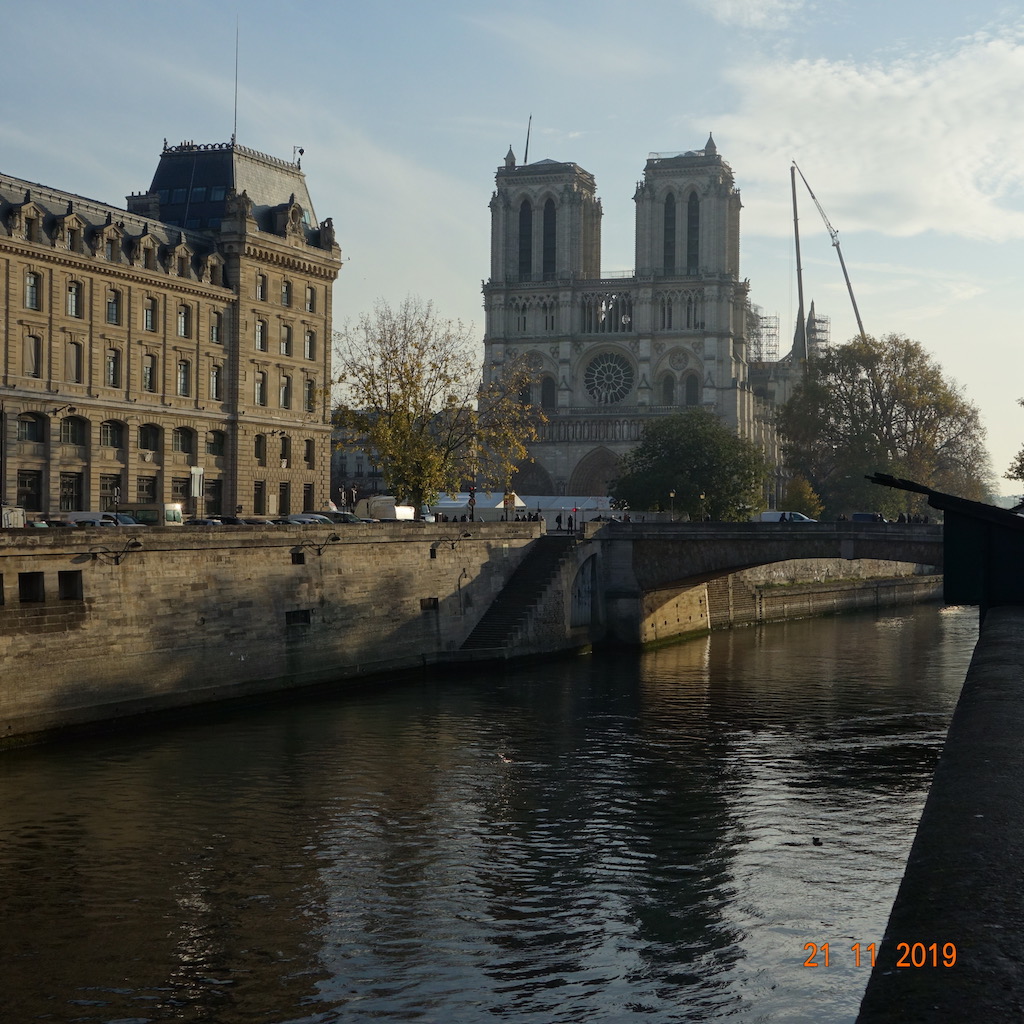
Île-de-France
10. Bougival to Paris
Medium
6h30
24,6km
+445m
-458m
Step
Embed this item to access it offline
You start your day in the Parc de la Jonchère with its signposts, then the Parc de la Celle-Saint-Cloud and its castle. After crossing the Normandy motorway you will discover the park of Saint-Cloud and its magnificent gardens overlooking the Seine and Paris. The beaconing invites you to cross the Seine to go along the Longchamp racecourse and then the Auteuil racecourse. You are in Paris intra-muros, Palais de Chaillot, Grand Palais, place de La Concorde, Les Tuileries to arrive in the Ile de la Cité and its cathedral.
13 points of interest
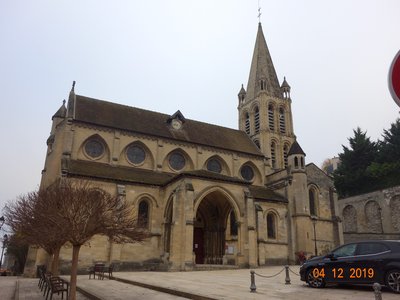
Église Notre-Dame de l’Assomption à Bougival - Association Colomban en Brie TouristNotre-Dame de l’Assomption Church, 78830 Bougival
The church of Notre-Dame de l'Assomption, built during the first half of the 12th century, was restored at the end of the 19th century by Lucien Magne, one of the architects of the Sacré-Cœur de Montmartre.
The 12th century bell tower is listed. The church has two capitals, also from the 12th century, placed at the entrance of the choir.
The baptismal font dates from the 16th century and the altar, carved in gilded wood, from the 17th century.
In the south aisle is the epitaph of Rennequin Sualem, inventor of the so-called Machine of Marly. Let us mention the Art Nouveau mosaics and the suite of stained-glass windows from the same period on the south side.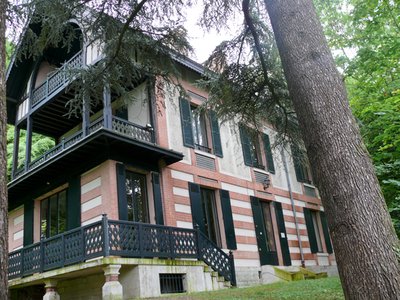
Musée Yvan Tourguéniev à Bougival - Sortir-Yvelynes.fr CulturalMusée Yvan Tourguéniev in Bougival
Close to the church of Bugival there is a plaque relating Gustav Flaubert's visit to Turgenev, a Russian writer, novelist, short story writer and playwright (1818-1883). Crossing the Parc de la Jonchère, on the Via Columbani at the exit of Bougival, you pass within 300 metres of the Yvan Tourguéniev museum.
The writer Ivan Turgenev lived the last 9 years of his life in this domain where he had a Russian-Swiss chalet built: the Dacha in reference to his country of origin.
Museum open on Saturdays and Sundays in season.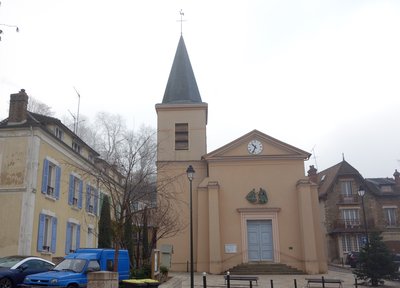
Église Saint-Pierre et Saint-Paul à La Celle Saint-Cloud - Association Colomban en Brie TouristSaint-Pierre - Saint-Paul Church in La Celle Saint-Cloud
We know from a letter from Saint Irminon, abbot of St Germain des Prés, that in 770, there were two churches: one under the patronage of St Pierre, the other was on the territory of Chesnay. They were destroyed by the Normans. The church of St Pierre was modestly rebuilt, but sacked by the Huguenots during the wars of religion. The monks of Saint Germain des Prés rebuilt it in the 17th century. It was consecrated in 1717 when the choir had just been completed.
It was then a small building (120 places) richly decorated with woodwork. All the furniture was sold during the Revolution, but a large part of it was then returned by the buyers.
Plundered during the Prussian occupation, during the siege of Paris in 1870 the church was restored again.
In 1954 work began to enlarge the church, the nave was lengthened and the left part of the choir was built.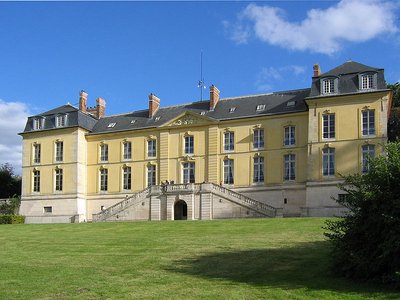
Château de La-Celle-Saint-Cloud - monumentum.fr HistoricalCastle of La-Celle-Saint-Cloud
The castle of La-Celle-Saint-Cloud succeeds a former monastery closed in the seventeenth century. The building will change owners over the centuries first with the family of La Rochefoucauld, then the Marquise de Pompadour who will embellish the property and the park. The furniture was preserved during the Revolution. As the last owners had no heirs, they bequeathed the castle in 1950 to the Ministry of Foreign Affairs.
The castle welcomes the founders of the Fifth Republic who work there for several days. From that time the site became the seat of several international meetings.
The castle is not open to visitors.
Pavillon Butard à La-Celle-Saint-Cloud - Association Colomban en Brie HistoricalLe Pavillon du Butard in La-Celle-Saint-Cloud
In 1683, Louis XIV bought the land of La Celle from the monks of Saint-Germain-des-Prés Abbey and integrated it into the great park of Versailles.
On a parcel of this land, called the Hubies woods, Louis XV ordered the architect Gabriel to build a hunting lodge, the construction of which took 4 years from 1750 to 1754; it was initially called the "Hubies lodge".
The pavilion has been closed since 2015. An association is taking initiatives to obtain its rehabilitation.
La mairie el’ l’église de Marne-La-Coquette - Association Colomban en Brie TouristTown hall and church in Marne La Coquette
The town hall-school and church complex in Marne La Coquette are harmoniously arranged. Marnes-lès-Saint-Cloud was founded in 1200 by the bishop of Paris Eudes de Sully. He had part of the forest cleared, built the village erected as a parish in 1202 and built the church of St Eloi which was destroyed during the Revolution.
The town hall school was built in 1855 and in 1859, Emperor Napoleon III built, at his own expense, a new church to replace the one destroyed during the Revolution. The immediate proximity of the two buildings will inspire the architects. The church will bear the name of the empress: Sainte-Eugénie, who greatly appreciated the place.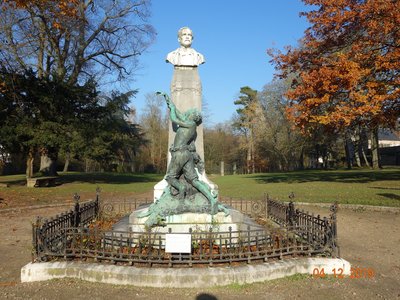
Hommage de la ville de Marne-La-Coquette à Louis Pasteur. Monument situé au centre-ville sur la Via Columbani - Association Colomban en Brie HistoricalLouis Pasteur in Marne-la-Coquette
Louis Pasteur 1822-1895
Considered one of the fathers of microbiology, Louis Pasteur has devoted himself body and soul to advancing science and medicine.
On 27 December 1822, Louis Pasteur was born in Dole, in the Jura. After studying at the college in Besançon, he joined the École Normale Supérieure in Paris.
He became a professor before being appointed dean and professor of chemistry at the new University of Sciences in Lille.
In his new position, he began research on the fermentation process and made a major discovery: he proved that yeasts are the micro-organisms responsible for the phenomenon. He also shows that the acidity of wine is caused by certain bacteria.
In 1865. He studies the causes of silkworm disease, which is becoming more and more worrying for French producers. For four years, he worked to find a way to stop the epidemic before it destroyed the French silk industry. He finally discovered the hereditary nature of the disease and developed a system to prevent its spread.
He also tackles rabies and his experiments - particularly on dogs - are a nuisance to the neighbourhood. So he looked for a somewhat isolated place not too far from Paris. In 1884 he was offered the Domaine de Villeneuve l'Etang for his research.
Laboratories, an animal sanctuary and, in the rooms of the Cent Gardes, an apartment in which the Pasteur Museum of Applications and Research, unfortunately closed to the public today, is located.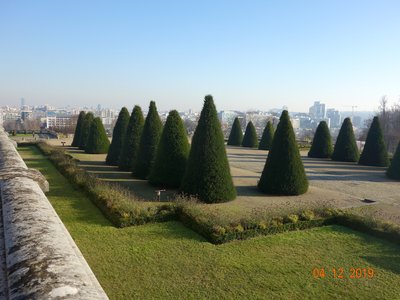
Le parc de Saint-Cloud avec la capitale en arrière-plan - Association Colomban en Brie PanoramicParc in Saint-Cloud
The Via Columbani runs through a large part of this park overlooking the capital.
The park of a vanished castle. Shaped in the sixteenth century by Jerome de Gondi, squire of Catherine de Medici, the house had terraced Italian gardens with fountains, caves and waterfalls. The castle and its 460-hectare park were embellished by Philippe d'Orléans, Monsieur, brother of Louis XIV, and his architects Le Pautre and Hardouin-Mansart. Queen Marie-Antoinette continues the transformations. Summer residence of the sovereigns in the nineteenth century, the castle is burned in 1870. Too intimately linked to memories of the monarchy and the Empire, the building was razed to the ground in 1892.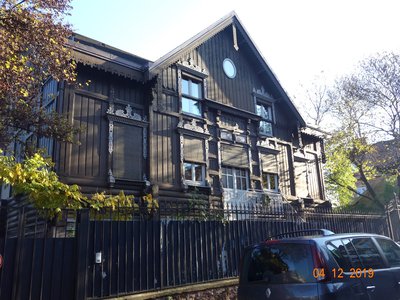
Isba russe au 15 rue des Écoles à Saint-Cloud - Association Colomban en Brie TouristRussian Isba in Saint-Cloud
Located on the Via Columbani at 15 rue de l'École, the Russian isba comes from the Universal Exhibition of 1867, the year in which Russia was one of France's guests of honour. Between 1855 and 1937, Paris hosted six Universal Exhibitions. On these occasions, "exhibition architecture", ephemeral buildings and reproductions of ornaments were developed to characterize the essence of a country or a civilization. This 19th century peasant isba, which originated in the real Russian village built on the Champ de Mars in 1867, is a good example of this. It is made of beams nested within each other by deep notches. Adapted for habitation, the original architecture has been completely reworked.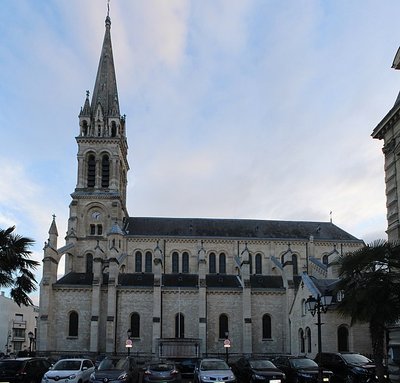
Église Saint-Clodoald à Saint-Cloud - Association Colomban en Brie TouristMarie Antoinette Chapel and Saint-Clodoald Church in Saint-Cloud
Proseguendo su Via Columbani, Piazza Sully, vedrete la cappella alla vostra sinistra.
Quando Maria Antonietta fondò l'ospizio di Saint-Cloud, sull'attuale Place Silly, chiese al suo architetto Richard Mique (1728-1794) di aggiungere una cappella, che esiste ancora oggi. Aveva già costruito diverse cappelle: quella del convento della Regina a Versailles, quella del carmelo di Saint-Denis, e la cappella del Château de Saint-Cloud, ormai scomparsa.
Davanti alla cappella prendete la rue du Dr Desfosssez per qualche metro per visitare la chiesa di Saint-Clodoald.
Nel VI secolo, Clodoaldo (522-560), nipote di Clodoveo, rinunciò al trono di re di Francia per diventare monaco. Fece costruire una cappella sulla collina, sulle rive della Senna, nel luogo chiamato Novigentum, dove formò una comunità di sacerdoti. Quando morì nel 560, fu sepolto nella cripta della cappella che aveva costruito. Nel VII secolo la cappella fu posta sotto il patrocinio di San Clodoaldo. Un secolo dopo, fu eretta come chiesa collegiata con nove canoni. Quando la collegiata di Saint-Cloud cadde in rovina, la regina Maria Antonietta fece costruire una chiesa in stile neoclassico a partire dal 1787. Su iniziativa di padre Pierre Romand, parroco di Saint-Cloud dal 1860 al 1887, la chiesa fu ricostruita.
Questa nuova chiesa ha ricevuto il sostegno finanziario dell'imperatore Napoleone III. La chiesa viene benedetta il 12 maggio 1863 da Monsignor Mabille, vescovo di Versailles.
Hippodrome d'Auteuil - Association Colomban en Brie TouristBois de Boulogne and hippodrome d’Auteuil
Arve Bridge
The Avre footbridge is an aqueduct bridge built between the Bois de Boulogne in Paris and Saint-Cloud, according to the plans of Gustave Eiffel, at the request of the city of Paris. The bridge is part of the Avre aqueduct which carries the waters of the river Avre to Paris and allows the pipes to cross the Seine. It is equipped with a pedestrian bridge.
Bois de Boulogne
Development work on the Bois de Boulogne was carried out by Haussmann during the Second Empire. The famous hippodrome, inaugurated by Napoleon III in 1857, stands on the site of an abbey founded in 1255 by Saint Isabelle, sister of Saint Louis.
Hippodrome de Longchamp.
At the instigation of the Duke of Morny, the racecourse was built in 1857 in the Bois de Boulogne. During the two world wars in the 20th century the racecourse was bombed and became a pasture for animals coming from the warring regions north and east of Paris. Major works are undertaken in the 1960s to restore the lustre of yesteryear to this racecourse.
More information Wikipedia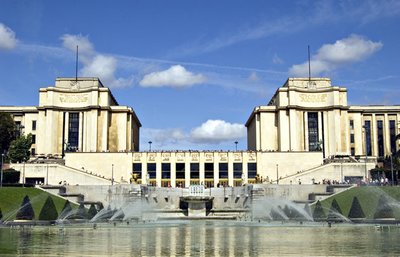
Palais de Chaillot à Paris - Amis de saint Colomban CulturalLe Palais de Chaillot au Trocadéro à Paris
The Trocadero Palace was built for the 1878 Universal Exhibition on Moorish and neo-Byzantine inspired plans.
The Palais du Trocadéro was eventually destroyed and replaced by the Palais de Chaillot built for the 1937 Specialized Exhibition, which itself took over most of the framework of the old building, including the wings and glass roof and the foundation of the colonnades.
More information Palais de Chaillot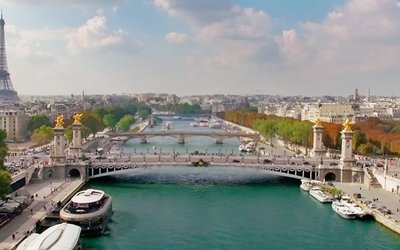
La Seine à Paris - Paris.fr TouristQuays of the Seine
Your stage ends with the most beautiful walk in Paris walking on the banks of the Seine rich in eclectic heritage.
A quick overview of the monuments encountered during your walk can be consulted on the internet from your mobile phone.
Description
Leaving the church of Notre-Dame de l'Assomption in Bougival, turn left to go around the church and go up the rue de la Croix aux Vents, first street on the right, continue on the forest road, follow the red and white signs, continue on Chemin du Haut du Parc.
- Turn left on the first ascending road, Chemin de Froid Cul, turn right then straight ahead on allée des Sablons, turn right on avenue des Combattants, at the crossroads take the first left on rue de la République, turn right in front of the church, cross the Place de l'Église and take avenue Yves Levallois in front of you.
- On the left go up sentier du Souvenir, asphalt road towards the wood, on the right in front of the cemetery, road of the cemetery, on the left lane between two cemeteries, on the right avenue Auguste Dutreux, on the right avenue de Pompadour, on the left avenue des Suisses, first path on the right in the wood, at the crossroads straight ahead, at the next crossroads on the left follow red and white markings.
- On the left, follow chemin du Butard, straight ahead with red and white signs, pass in front of the Pavillon du Butard, on the left take the driveway in the park, driveway on the right at the crossroads at the end of the park, first driveway on the left sentier des Bois des Dames, on the right rue des Fonds Huguenots.
- Turn right on Rue Émile Testu, cross Boulevard de la République, Place Charles de Gaulle on the left, turn left on Rue Allouard, cross Boulevard de Jardy, take Avenue des Terrasses, turn left at the crossroads with Avenue du Bois, at the roundabout turn left, continue on the road between the highway and the railway, take the tunnel on the right under the highway, straight ahead in the woods.
- Turn right at the crossroads with rue Yves Cariou D407, go around the school, left on rue Georges et Xavier Schlumberger, cross the Place de la Mairie parallel to rue Schulmberger, at the level of the church slightly to the left on rue de la Porte Blanche, at the end of the houses take the dirt road in the wood on the right, straight ahead at the crossroads in the wood, second road on the right, straight ahead at the two crossroads, left at the next crossroads.
- First road on the right, stay on your left at the crossroads of 6 roads, fourth road on the right, right at the crossroads, allée de Monsieur, right allée de Chambillard, tarred road, cross D985 from Paris to Versailles, continue allée de Chambillard, at Rond de Chasse, second alley on the left, allée de la Grande Gerbe, on the right second wood path, on the right in front of the big reservoir, on the left allée des Glaises, on the left allée d'Orléans, at Bassin de la Grande Gerbe, third tarred alley on the right, Tapis Vert
- After Bassin d'Apollon, continue on the hillside, allée des Lilas, rue Anatole Hébert, straight ahead, rue des Écoles, place de Silly, rue Gaston Latouche, at the Daily crossroads on the right, cross the 2X2 lane, on the left Marché des Milons rue André Chevillon, slightly left boulevard Jules Peltier.
- At the roundabout straight ahead Avenue Maréchal de Lattre de Tassigny, on the right take the Avre footbridge for pedestrians, cross the Seine, at the end of the footbridge on the left go down to allée des Bords de l'Eau, cross this alley, take opposite route de la Seine at the Butte Mortemart, on the right at the crossroads of the alleyways go around the racecourse.
- Straight on at the roundabout with route de Sèvres in Neuilly, at the crossroads of 5 roads stay on route de la Seine in Mortemart, on the left at the crossroads of allée de la Reine Marguerite, on the right avenue de l'Hippodrome, route des Lacs in Passy, pass over the Périphérique, cross boulevard Suchet straight on avenue d'Ingres, allée Jean Sablon, chaussée de la Muette
- At the second crossroads turn left on avenue Paul Doumer, at the Trocadero cross the Human Rights square, avenue du Président Wilson, cross the Place de l'Alma on the left cross the Alma bridge while remaining on the right bank of the Seine, port of the Conference, stay on the bank of the Seine until you reach the Royal bridge which you are taking.
- On the left at the exit of the bridge quai Voltaire, quai Conti, quai des Grands Augustins, quai Saint-Michel, cross the arm of the Seine on the Pont Neuf, on the Ile de la Cité on the right quai des Orfèvres, quai du Marché Neuf, you have arrived on the square in front of Notre-Dame.
- Departure : Notre-Dame de l’Assomption Church, Place des combattants, 78 380 Bougival
- Arrival : Notre-Dame de Paris Cathedral, Place St Jean Paul II, 75 000 Paris
- Towns crossed : Île-de-France
Altimetric profile
Report a problem or an error
If you have found an error on this page or if you have noticed any problems during your hike, please report them to us here:
Close by9
- Accommodation
Accommodation
Adveniat, Christian youth hostel in Paris
n the centre of Paris, 200 metres from the Via Columbani from the Pont des Invalides, Adveniat Youth Hostel is run by a Catholic religious community, the Augustinians of the Assumption. The hostel offers an ideal location from which to discover the French capital, its people and its heritage.... - Accommodation
Accommodation
A la Source de Bougival
A la Source de Bougival is located at the edge of the Jonchère Forest Park, on the hills of the Impressionists overlooking the Seine. This house is the perfect place to rest in a haven of peace, it welcomes all travellers (business or tourism). Muriel and Philippe welcome you all year round for short or long term stays in their studio and their two guest rooms. Passionate about travelling, they love to welcome and share with their guests. - Accommodation
Accommodation
Hôtel Marignan in Paris
Hotel Marignan is a family hotel located in a quiet street in the 5th arrondissement in the heart of the Latin Quarter in Paris. Close to Notre Dame de Paris (6 minutes on foot), the Sorbonne University, the Pantheon and the Luxembourg Gardens (5 minutes on foot), the hotel is ideally located for visiting Paris.









